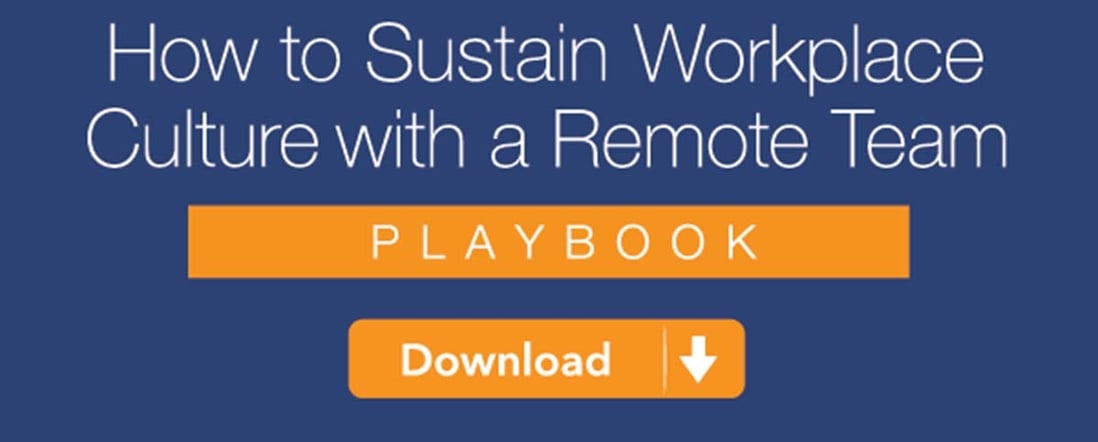
Focus on Company Culture to Make the Most of Your Hybrid Workforce
By Candace Coleman, CultureWise Content Manager
As the business world pressed beyond the early pandemic years, many of the changes accelerated by the health crisis became permanent. For example, remote work was in play for many industries pre-COVID, but it got a grand-scale audition in 2020-2021 and landed a starring role.
Today, telecommuting looks like it will remain center stage because it affords multiple benefits for both workers and employers. But operating with a completely remote team is impractical for some business sectors, and it also brings some downsides. Consequently, numerous companies are opting for a more flexible alternative: a hybrid workforce.
The uptick in the hybrid trend is documented by research, including the Accenture Future for Work Study conducted in 2021. Their survey found that 63 percent of high-growth companies had already adopted a “productivity anywhere” workforce model—and the number continues to climb in 2022.
Organizations are willing to adopt this new strategy because, as also noted in the Accenture study, 83 percent of workers prefer the options afforded by hybrid jobs. Once people experienced more work-life agility during the pandemic, they weren’t willing to revert to more traditional work formats.
What’s a Hybrid Workforce?
A hybrid workforce is not one size fits all—the configurations of these teams vary widely. They can be comprised of:
- A partially remote and partially on-site staff
This model works for many manufacturing, distribution, and other companies that require some people to be on-site while others can work effectively from home.
- A staff that splits the week between working off-site and in the office
Organizations that operate with this model can rotate the teams that meet in person or have the entire staff work from one location or the other at assigned times.
- An asynchronous team with different schedules
This kind of team can be all-remote, all on-site, or a combination. People’s shifts are scheduled based on what works for them and their tasks.
On paper, the hybrid model combines the best of all workplace worlds. For workers, they offer:
- The potential to have flexible schedules so they can better meet personal responsibilities
- A choice to work at the times when they’re most productive
- Opportunities to reap the best experiences of working in both virtual and on-site environments
For employers, the benefits include:
- The ability to draw from a wider talent pool not necessarily tied to location
- The capacity to better compete in a tight talent market by offering hybrid options
- The potential to save money with reduced office space and correlating expenses
These solutions fill numerous needs for organizations and their employees. But the variables that make hybrid work so attractive also create new challenges. The negative repercussions of this work model can quickly overshadow all its positive attributes if leaders don’t proactively address them.
4 Focal Points to Make Your Hybrid Workforce Succeed
Technology innovation soared during the pandemic to address the mounting needs of companies operating with remote teams. The new IT options also opened the door for companies to function indefinitely with a hybrid workforce. But the software systems alone won’t ensure success with this multi-faceted work model.
To make this format work, leaders need to understand the potential pitfalls of a hybrid workforce and embrace strategies to overcome them.
In particular, they need to take action to preserve:
- Inclusivity
- Connection
- Communication
- Effectiveness
The best way for leaders to make hybrid teams successful is to intentionally build a strong company culture to support them.
Inclusivity
The hybrid model can further complicate existing challenges to building diversity, equity, inclusion, and belonging (DEIB) in the workplace. To combat this, leaders must first double down on their awareness of DEIB issues. Then they must commit to building a better environment in this modern work format in which everyone feels seen, heard, and welcome.
One of the most pressing problems that can arise with a hybrid team is proximity bias, or the tendency to favor employees whom leaders see more often. This attitude, whether intentional or not, often results in more raises or promotions being distributed to the people who most often show up in person to work.
Leaders need to recognize that this bias likely exists, especially since it most often affects the people that DEIB initiatives are supposed to help. For example, new data from the Future Forum Pulse Survey reveals that, for multiple reasons, people of color and women are less likely to opt into in-person work structures.
Gartner Senior HR Principal Emily Strother addresses this trend in a Computer World article,
“Sadly, early indicators suggest [DEIB] barriers will be worsened in the hybrid world. With underrepresented employees being more likely to choose remote over in-office work, their visibility to senior leaders suffers. And managers’ perceptions that on-site workers are more productive suggests that underrepresented talent working remotely will be more vulnerable to biased performance reviews.”
To overcome proximity bias and ensure equity between remote and on-site employees, leaders need to intentionally develop principles and guidelines that outline how the hybrid model can be successful for all their people.
The principles for a hybrid workforce should be rooted in the company’s core values that address inclusivity and equality. Once those are established, leaders must define the behaviors that will maintain a level playing field and embed these guidelines into their company culture.
Connection
Anyone who spent time working remotely during the pandemic felt the effects on workplace relationships—especially between employees who don’t routinely interact. For example, data from Microsoft’s 2022 Work Trend Index shows that while 58 percent of hybrid employees maintained solid relationships with their direct teams over the past year, connection with coworkers outside their immediate circle suffered.
This statistic is important because the ability to form bonds with people across departments and roles is an integral part of understanding an organization’s big picture. This web of interaction helps workers develop a context for what they do and the ripple effect everyone’s job has on the team. It also strengthens employee engagement and prevents siloed behavior.
Hybrid team members don’t experience the spontaneous conversations, casual gatherings, and workplace chatter that are routine for people working under one roof. To overcome this shortfall, leaders need to intentionally create and encourage new ways for their teams to build relationships.
This strategy to create time and space for inter-team networking might include:
- Retreats structured to stimulate dialogue and interaction among teams and departments.
- Forming cross-team committees to address specific business challenges
- Inviting new hires to engage with multiple departments in the onboarding process
Initiatives like these not only help hybrid staff build stronger relationships with a range of coworkers. They also help them understand how valuable bridge-building is to their careers and the organization.
Communication
It’s easy to understand how communication can get out of sync when people work in different locations with varying schedules. But with forethought, leaders can prevent the “everyone marching to their own drum” phenomenon from happening.
Lead talent experts at McKinsey have researched companies that have successfully maintained their communication channels among hybrid team members. McKinsey Partner Brook Weddle reported her observations about the study in a recent interview:
“We saw healthy companies emphasizing the free flow of information—knowledge sharing, performance transparency—as well as practices like role clarity and operational discipline. Successful companies were innovating and shaping new solutions and translating them back into systems and processes.”
In other words, these companies didn’t just supply the technology people could use to communicate. They also created innovative strategies to reinforce critical behaviors that facilitate effective communication.
The behaviors include:
- Effective listening
- Establishing expectations
- Freely sharing information
- Being clear and thorough
- Following up
These behaviors create a powerful grid of effective communication when performed consistently. To achieve this goal, leaders must model these behaviors and coach their people to be much more intentional in practicing them.
Effectivity
One of the biggest challenges for hybrid team leaders is determining the ratio of time spent on-site versus working remotely. Specifically, they need to make time spent at the office worth the commute.
Microsoft Vice President Jared Spataro addressed hybrid employees’ sentiment about on-site work in a Harvard Business Review article:
“Thirty-eight percent of them say their greatest challenge is knowing when or why to come into the office, and only 28 percent of them have a team agreement that answers those fundamental questions.”
He notes that the issue for leaders is not just figuring out when to get staff members into the office — it’s making the most of their time when they’re there. Leaders need to consider the “who, where, and why” of in-person gatherings to make coming in to work worthwhile. They shouldn’t summon people to the office to spend time on solo tasks they could do more effectively from home.
One way to address this issue is to re-envision the role the office can play in improving collaboration. Brook Weddle recommends thinking through the purpose of specific types of meetings and determining if gathering in person will improve their outcome.
For example, a meeting to develop strategy might be an ideal time for people to meet face to face. But an information-sharing session can easily take place virtually with no downside. She notes:
“Getting to that level of granularity helps in orchestrating the best possible outcome for in-office collaboration, so that interactions can be that much more powerful and meaningful.”
Building this kind of respect for people’s time into the hybrid work culture will allow employees to make the most out of working alone or together. As a result, they’ll feel more purposeful with their work and better understand and appreciate the merits of the flexible work model.
A Systematic Approach to Enhancing Hybrid Teams
The best way for leaders to develop a high-performing hybrid team is to systematically build an organizational culture that will support and empower their staff. Their first step should be to prioritize inclusivity, connection, communication, and effectivity. Then they can define and teach the behaviors that will bring these standards to life.
The CultureWise system provides a systematic approach to achieving these goals. It can help leaders develop a workplace culture that overcomes the challenges and embraces the opportunities of a hybrid team.
Connect with a CultureWise specialist to learn more about how this program offers leaders a method to intentionally build the culture that maximizes their team’s potential. And subscribe to Culture Matters to receive informative articles, videos, podcasts, and webinar opportunities every week.
%C2%AE-08.png?width=3812&height=693&name=CultureWise%20logo%20(horz)%C2%AE-08.png)


